Construction OEMs grapple with cost problem amid pressure to decarbonise
29 October 2024
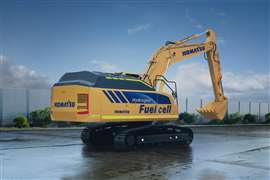 Komatsu’s new mid-sized concept excavator is powered by a hydrogen fuel cell. Photo: Komatsu
Komatsu’s new mid-sized concept excavator is powered by a hydrogen fuel cell. Photo: Komatsu
Stringent new regulations and targets that are pushing the construction industry to decarbonise are leading to impressive innovations in machinery – but they come at a cost.
And a priority for construction equipment OEMs and their suppliers is finding how to invest in the research, development and manufacture required while still keeping a lid on the total cost of ownership (TCO) of those machines.
The challenge of maintaining a realistic TCO was one the key themes to emerge at the recent Power Progress Summit.
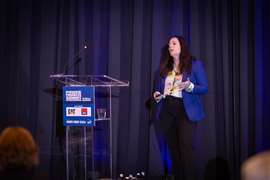 Tara Stryker, vice president for auction company RB Global, said that TCO in the North American used equipment market will continue to outpace inflation in the near future. (Photo: Eason Photography)
Tara Stryker, vice president for auction company RB Global, said that TCO in the North American used equipment market will continue to outpace inflation in the near future. (Photo: Eason Photography)
Held in Chicago, Illinois, USA earlier this month (1-2 October), the Power Progress Summit saw speakers from the likes of Caterpillar, Cummins, ZF Group and Volvo Penta address developments in digitalisation and decarbonisation.
Discussing the North American used equipment market during the Off-Highway Conference, Tara Stryker, vice president of auction company RB Global said that TCO of new machines is outpacing inflation and is set to continue to do so in the near future.
“We’ve seen new equipment costs rising more than 30% in the last four years,” she said. “If you go back the 12 years prior to Covid, that’s more than double the increase that we saw back then.”
Tough proposition for mid-sized machines
Alex Woodrow, managing director, Knibb Gormezano and Partners (KGP) said, “Total cost of ownership is what is still going to drive who buys what machine, where and how they fuel them over the next decade.
“Once you get over around 10 litres of fuel per hour, that’s where typically fuel becomes more than the operating costs. So when you look at TCO of the small machines, yes you can go to battery electric and it makes a bit of sense there, especially if you are working in cities because of low emissions zones.”
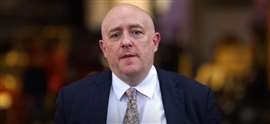 Alex Woodrow, managing director, KGP
Alex Woodrow, managing director, KGP
But decarbonising machines in the mid-range is trickier from a TCO perspective, Woodrow said. “You really have to look at: ‘Do we electrify or go to an alternative fuel on a case-by-base basis?’ It’s only when you get to the very largest machines, the mining dump trucks over 560kW where you get a significant lifecycle cost reduction from electrifying.”
“I believe it is an energy problem, not necessarily a technology problem, that we face. It is getting the energy in the machines in the right place,” he added, noting that decarbonising off-road machinery will require employing not just battery-electric technology but a blend of alternative fuels (whether renewable diesel, hydrogen, ethanol or methanol), as well as hydrogen fuel cells to meet differing requirements while keeping control of the TCO.
He highlighted how KGP is working with CECE, which represents the interests of equipment manufacturers in Europe, to examine 30 different types of fuel and their benefits. “There’s no silver bullet for this. You have to look at a regional level at what fuel is available, what your end use and the load factor and utilisation rate of the machine is. Fuel availability is going to be one of the big issues,” he said.
Decarbonisation cost can’t be pushed onto customer
The challenge of maintaining a realistic TCO was also a point that Alexandre Esgolmin, head of Product Line Driveline Technology, Commercial Vehicle Solutions, ZF Group, raised, warning OEMs not to leave customers shouldering the cost burden of decarbonisation.
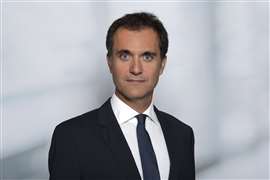 Alexandre (Alex) Esgolmin
Alexandre (Alex) Esgolmin
“Everybody is looking to a zero-emission future. That’s a pretty big consensus that’s enabled through regulations and through the geopolitical circumstances that we face,” he said.
“But it needs to be done in a way that makes the TCO affordable and sustainable for the industry and for the end customer. It cannot be something that is just pushed to the end customer. It needs to be supported by a well-weaved infrastructure.”
And Dr Wilfried Aulbur, senior partner of Roland Berger echoed that argument while discussing electrification of on-road and off-road equipment. “The Holy Grail of electrification in commercial vehicles and off highway is actually a multiplication: I have to have the right product, I have to have the right infrastructure, and I have to have TCO positive use cases that I can actually do something with. If any factor over here is zero, we’re done,” he said.
Industry collaboration and optimised fleets
Esgolmin advocated collaboration throughout the manufacturing industry to tackle the TCO challenge. “I can present how ZF can and is contributing to the industry and this transformation. But it’s one company. Even a handful of companies cannot enable the transformation of the segment. It needs to be a collaboration between all of the players,” he said.
And Brad Sutton, executive director of powertrain engineering for engine and power generation specialist Cummins, advocated using technology to optimise the maintenance and repair of machine fleets to bring the TCO down.
“Reduced TCO is a huge topic. I think a big worry from our industry is, as this new technology comes, it becomes very expensive. How are we all going to be able to afford this? How can we make that same payback with this new technology?
Sutton suggested that new digital technology and the data it generates would allow companies like Cummins to predict failure of components within machines, even in components like brake pads that aren’t traditionally associated with powertrain providers.
“As we run a more optimised approach, we can show that value and that TCO to every customer out there,” he said. “With all the data and technology [we have], I can predict what is going to happen and I can align that with downtime for other maintenance intervals.”
Caterpillar ‘most concerned with next step’
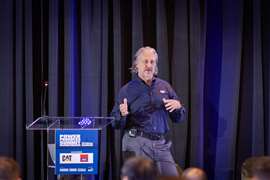 “All of us have to be prepared to offer [multiple] options, depending on what the requirement is for the individual market.” – Rob Hoenes, Caterpillar (Photo: Eason Photography)
“All of us have to be prepared to offer [multiple] options, depending on what the requirement is for the individual market.” – Rob Hoenes, Caterpillar (Photo: Eason Photography)
Caterpillar’s senior vice president of electrification and energy solutions Rob Hoenes acknowledged that economics would dictate the pace of customers’ sustainability journey.
“We have an incredibly wide range of options and it takes most of the capability in Caterpillar to be able to cross all the way from the power to the machines, to the components, to the energy distribution and everything in between,” he said.
Hoenes went on to point out that we can spend a lot of time talking about what the commitments are and how we are going to get there – and goals are important.
But he expressed confidence that we all know “where we’re going because our customers are trying to go there. I’m most concerned about what the next step is.” Evaluating net zero goals is not nearly as important, he concluded, as taking that next step.
STAY CONNECTED



Receive the information you need when you need it through our world-leading magazines, newsletters and daily briefings.
CONNECT WITH THE TEAM








